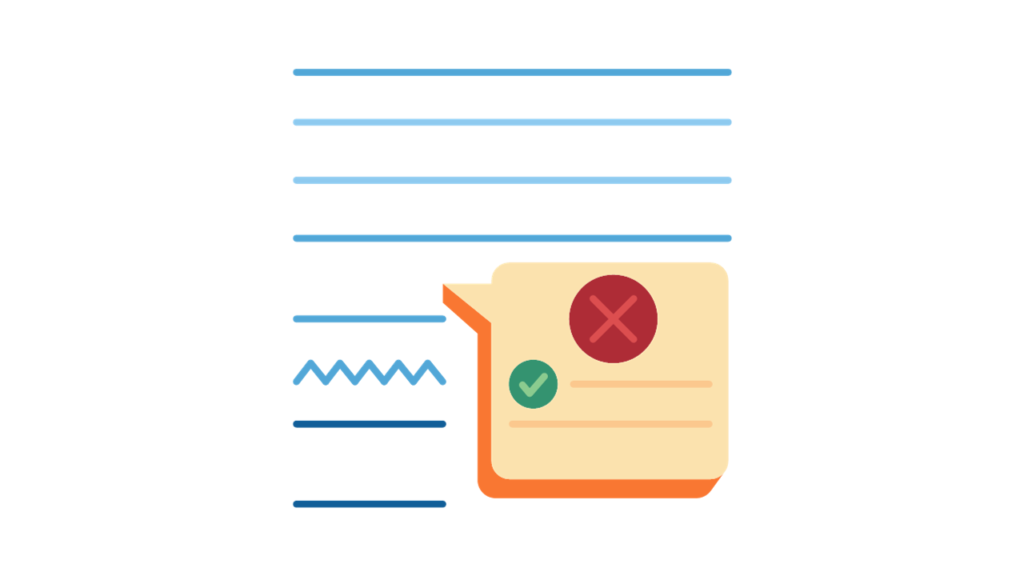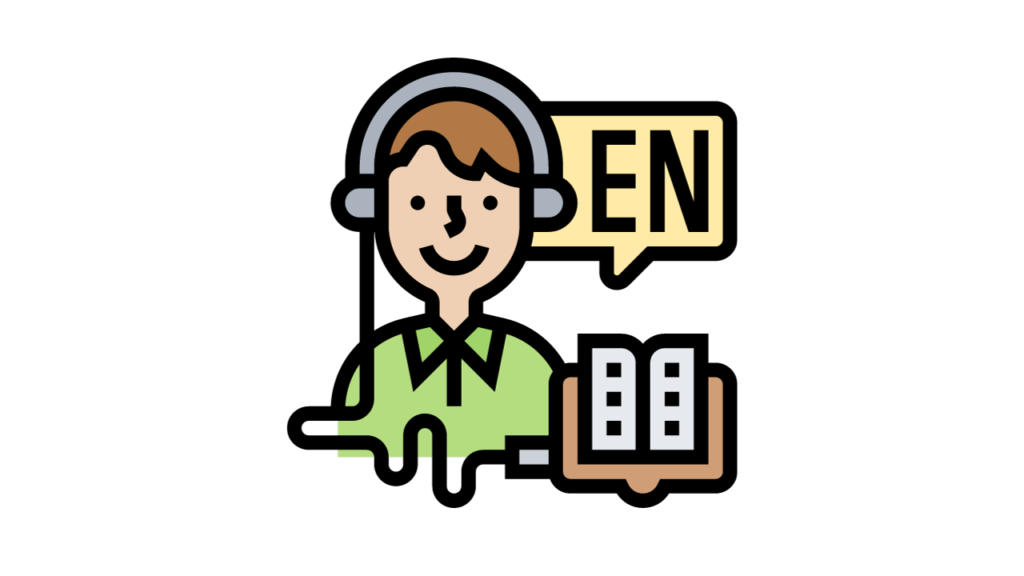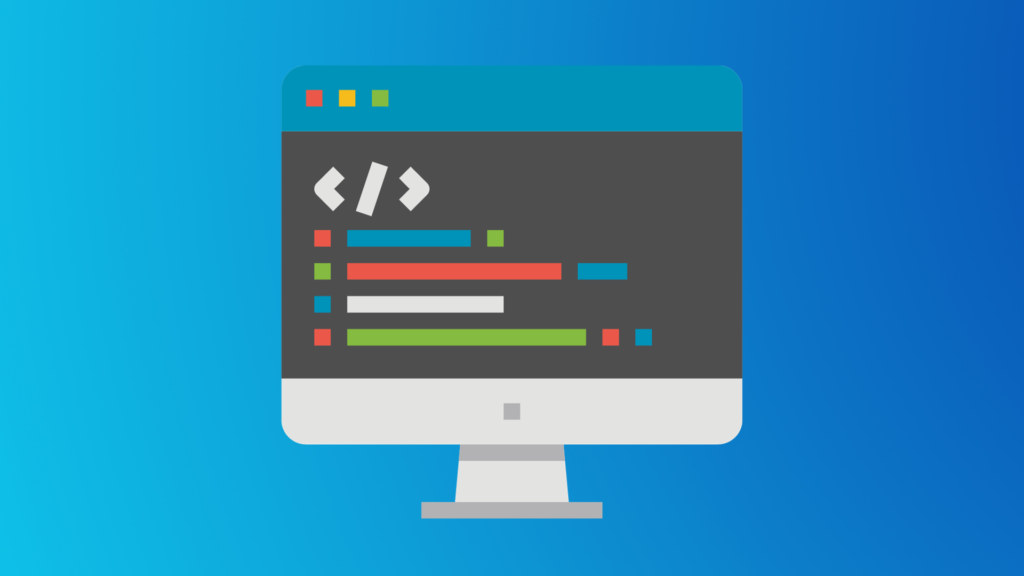Introduction
Grammar checkers have become an essential tool for writers, students, and professionals alike. They help us polish our writing, catch errors, and improve our overall communication skills. In this comprehensive guide, we will explore the world of grammar-checkers, understand their importance, and learn how to create our very own online grammar checker tool.

Importance of Grammar Checkers
Effective communication is of utmost importance in any form of writing, be it an email, a blog post, or a research paper. Grammar checkers play a pivotal role in ensuring that our writing is not only clear and concise but also free from errors.
These tools are invaluable in helping us identify and rectify grammar, punctuation, and spelling mistakes. Moreover, they go a step further by providing suggestions to improve the style, tone, and structure of our sentences.
By incorporating the use of a grammar-checker into our writing process, we can significantly enhance the overall quality of our work, making it more engaging and professional in nature.
Different Types of Grammar Checkers

- Traditional Grammar Checkers:
- These are basic grammar-checkers that primarily focus on detecting and correcting common errors such as spelling mistakes, punctuation errors, and basic grammar rules.
- They are usually built into word processors and text editors.
- Traditional grammar-checkers have been around for a long time and are widely used by writers of all levels.
- They provide a quick and convenient way to catch simple mistakes and ensure that the text is free from glaring errors.
- By highlighting spelling mistakes and suggesting corrections for punctuation errors, these grammar-checkers help writers maintain a high level of accuracy in their writing.
- They are especially useful for those who are not native English speakers or who struggle with grammar and spelling.
- Advanced Grammar-Checkers:
- These grammar-checkers go beyond the basics and provide more comprehensive analysis of the text.
- They can detect and correct complex grammar mistakes, suggest better word choices, improve sentence structure, and offer style and tone suggestions.
- Advanced grammar-checkers are designed to help writers refine their writing skills and produce more polished and professional content.
- They provide detailed feedback on grammar and syntax, helping writers identify and correct subtle errors that may go unnoticed by traditional grammar-checkers.
- By offering suggestions for better word choices and improvements in sentence structure, these advanced tools help writers enhance the clarity and coherence of their writing.
- They also provide style and tone suggestions, helping writers develop their unique voice and maintain consistency throughout their work.
- AI-Powered Grammar-Checkers:
- These grammar-checkers use artificial intelligence and machine learning algorithms to analyze text.
- They can understand context, detect nuanced errors, and provide more accurate and detailed suggestions.
- AI-powered grammar-checkers are at the forefront of technology and are constantly evolving to provide the best possible assistance to writers.
- By analyzing the context of the text, these tools can identify errors that traditional grammar-checkers may miss.
- They can detect subtle grammatical errors, such as subject-verb agreement and tense consistency issues.
- AI-powered grammar-checkers also offer more detailed suggestions for improvement, providing writers with specific examples and explanations.
- These tools can learn from user feedback, continuously improving their performance and becoming more tailored to individual writing styles.
- Plagiarism Checkers:
- These tools not only check for grammar errors but also compare the text against a vast database of published works to identify instances of plagiarism.
- Plagiarism is a serious offense in the academic and professional world, and writers need to ensure that their work is original and properly cited.
- Plagiarism checkers help writers maintain academic integrity and avoid unintentional plagiarism.
- By comparing the text against a database of published works, these tools can identify similarities and provide writers with a report highlighting any potential instances of plagiarism.
- This allows writers to make the necessary revisions and properly attribute any borrowed ideas or information.
- Online Grammar-Checkers:
- These grammar-checkers are web-based and can be accessed from any device with an internet connection.
- They are convenient for users who frequently work on multiple devices or collaborate with others.
- Online grammar-checkers offer the flexibility of accessing the tool from anywhere, without the need for installation or software updates.
- They are especially useful for writers who work remotely or collaborate with others on writing projects. Online grammar-checkers allow multiple users to access and edit the same document simultaneously,
- facilitating real-time collaboration and feedback. These tools often come with additional features such as cloud storage, document sharing, and integration with other writing tools.
- Offline Grammar-Checkers:
- These grammar-checkers are installed on a user’s device and do not require an internet connection.
- They offer the advantage of privacy and security, as the text is not uploaded to any server.
- Offline grammar-checkers are ideal for writers who prioritize privacy and want to keep their work offline.
- These tools provide the same level of accuracy and functionality as online grammar-checkers but without the need for an internet connection.
- They are especially useful for writers who work in remote locations or have limited access to the internet.
- Offline grammar-checkers ensure that writers can check their work for errors and make improvements even when they are offline.
Overall, grammar checkers serve as valuable tools for writers to improve their writing skills, enhance the quality of their work, and ensure that their content is error-free and professional.
Whether it’s a traditional grammar-checker, an advanced grammar-checker, an AI-powered grammar-checker, a plagiarism checker, an online grammar-checker, or an offline grammar-checker, writers have a range of options to choose from based on their specific needs and preferences.
These tools provide writers with the necessary support and guidance to produce high-quality writing that is clear, concise, and grammatically correct.
By using grammar checkers, writers can save time and effort in the editing process, allowing them to focus on the creative aspects of their writing.
How Grammar Checkers Work
Grammar checkers are powerful tools that help writers improve the quality of their writing by identifying and correcting grammatical errors. Here’s how they work:

- Parsing: Grammar checkers use sophisticated algorithms to analyze the structure of sentences and understand the relationships between words. They break down the text into individual words, phrases, and clauses to identify potential grammar mistakes.
- Rules and Patterns: Grammar checkers have a database of grammar rules and patterns that they use to check for errors. These rules cover various aspects of grammar, such as subject-verb agreement, punctuation, verb tenses, and sentence structure. The software compares the text against these rules to identify any violations.
- Error Detection: The grammar checker scans the text for potential errors by comparing it to the predefined rules and patterns. It flags any inconsistencies, incorrect word usage, missing punctuation, or other grammatical mistakes. Some advanced grammar checkers also provide suggestions to correct the errors.
- Contextual Analysis: To enhance accuracy, grammar checkers consider the context in which the words and phrases are used. They take into account the meaning of the sentence and the surrounding words to detect errors that may not be apparent through simple rule-based analysis.
- Feedback and Suggestions: Once the errors are detected, grammar checkers provide feedback to the writer. This feedback may include suggestions for corrections, explanations of the grammar rules violated, and examples of correct usage. The writer can then review the suggestions and make necessary edits to improve the grammar and overall clarity of the text.
Grammar checkers are valuable tools for both native and non-native English speakers, helping them enhance the quality of their writing and communicate effectively. However, it’s important to note that grammar checkers are not foolproof and may not catch all errors, especially in complex or ambiguous sentences.
Therefore, it’s always recommended to review the suggestions provided by the grammar checker and use personal judgment to ensure the accuracy and coherence of the final text.
Step-by-Step Guide to Creating Your Own Online Grammar Checker Tool
Choosing the Right Programming Language for Your Grammar Checker

To select the programming language for your online grammar checker, consider the following factors:
- Python:
- Advantages:
- Rich ecosystem with numerous libraries and frameworks for natural language processing.
- Excellent support for text processing and string manipulation.
- Disadvantages:
- Slower compared to languages like Java.
- Limited scalability for large-scale applications.
- Advantages:
- Java:
- Advantages:
- High performance and scalability, making it suitable for complex grammar checking algorithms.
- Extensive libraries for text processing and parsing.
- Robust error handling and exception management.
- Disadvantages:
- Steeper learning curve compared to Python..
- Advantages:
- JavaScript:
- Advantages:
- Runs in the browser, allowing for real-time grammar checking on web applications.
- Widely used for web development, making it easy to integrate with existing websites.
- Large developer community and numerous resources available.
- Disadvantages:
- Limited capabilities for complex grammatical analysis.
- Performance may be slower compared to Python and Java.
- Advantages:
Ultimately, the choice of programming language depends on your specific requirements and the trade-offs you are willing to make. Consider factors such as ease of development, performance, and the availability of libraries and resources.
Building the User Interface for Your Grammar Checker
Building the User Interface for Your Grammar Checker:
- Define the purpose: Start by clearly defining the purpose of your grammar checker. Is it solely for proofreading or does it also provide suggestions for improving writing style? Understanding the purpose will help determine the features and functionality needed for the user interface.
- Keep it simple: A cluttered and complex user interface can be overwhelming for users. Keep the design simple and intuitive, focusing on the key functionality. Use clear labels and icons, and organize the interface in a logical manner to make it easy for users to navigate and understand.
- Provide real-time feedback: Users want instant feedback on their grammar and writing. Implement a real-time feedback mechanism that highlights errors and offers suggestions as the user types. This not only enhances the user experience but also encourages users to improve their writing as they go along.
- Customization options: Different users have different preferences and requirements. Provide customization options that allow users to tailor the grammar checker to their specific needs. This could include options to enable or disable certain grammar rules, adjust the sensitivity of the checker, or choose different language settings.
- Error categorization: To make it easier for users to understand and address their errors, categorize them into different types such as spelling, grammar, punctuation, and style. Use clear visual cues and explanations to help users identify and correct their mistakes effectively.
- Integration with popular tools: Consider integrating your grammar checker with popular writing tools such as word processors, text editors, or content management systems. This will make it more convenient for users to access and utilize the grammar checker within their preferred writing environment.
- User feedback and support: Encourage users to provide feedback on the user interface and overall functionality of the grammar checker. Additionally, provide comprehensive support resources such as tutorials, FAQs, and customer support channels to assist users in case they encounter any issues or have questions.
By following these guidelines, you can build a user-friendly and effective user interface for your grammar checker, enhancing the writing experience of your users while helping them improve their grammar and writing skills.
Implementing the Grammar Checking Algorithm
The heart of any grammar checker is the algorithm that analyzes the text and identifies errors. This step requires a deep understanding of grammar rules, syntax, and language patterns. You will need to develop a set of rules and heuristics to detect common mistakes, such as subject-verb agreement errors, verb tense inconsistencies, and punctuation misuse. Additionally, consider implementing machine learning techniques to improve the accuracy and efficiency of your grammar checker.
Testing and Refining Your Grammar Checker Tool
Before launching your grammar checker tool, it’s crucial to thoroughly test and refine its functionality. Test it with a variety of texts, ranging from simple sentences to complex paragraphs. Pay close attention to the accuracy of the error detection and the clarity of the suggested corrections. Gather feedback from beta testers and make necessary adjustments based on their suggestions. Continuous testing and refinement are key to creating a reliable and effective grammar checker tool.
Marketing and Promoting Your Grammar Checker Tool
Marketing and Promoting Your Grammar Checker Tool
- Develop a strong brand image: Create a unique and recognizable brand identity for your grammar checker tool. This includes designing a compelling logo, choosing a consistent color scheme, and developing a clear brand voice.
- Build a professional website: Your website will serve as the main platform for promoting and selling your grammar checker tool. Make sure it has an intuitive user interface, showcases the features and benefits of your tool, and includes testimonials or case studies to build credibility.
- Utilize content marketing: Create valuable and educational content related to grammar, writing tips, and language usage. Share this content on your website, social media channels, and industry forums to attract potential customers.
- Leverage social media platforms: Engage with your target audience on platforms like Facebook, Twitter, LinkedIn, and Instagram. Share relevant content, respond to comments and messages, and run targeted ads to increase brand awareness and drive traffic to your website.
- Collaborate with influencers: Identify influential bloggers, writers, or language experts in your niche and collaborate with them to promote your grammar checker tool. This could involve guest blogging, sponsoring their content, or offering free trials or exclusive discounts to their audience.
- Offer free trials and discounts: Provide potential customers with the opportunity to try out your grammar checker tool for free or at a discounted price. This will allow them to experience its benefits firsthand and increase the likelihood of them becoming paying customers.
- Implement SEO strategies: Optimize your website and content for search engines by using relevant keywords, meta tags, and quality backlinks.
- Monitor and analyze your marketing efforts: Regularly track the performance of your marketing campaigns using tools like Google Analytics.
- Provide excellent customer support: Offer prompt and helpful customer support to ensure customer satisfaction. Happy customers are more likely to recommend your grammar checker tool to others and become loyal advocates for your brand.
Top 10 Free and Paid Grammar checker online tool
Grammar checkers are essential for ensuring the quality and correctness of your written content. Whether you are a student, professional writer, or someone who wants to improve their writing skills, using a grammar checker can greatly enhance the accuracy and clarity of your work. With a plethora of options available, it can be overwhelming to choose the right grammar checker for your needs. To help you make an informed decision, here is a list of the top 10 free and paid grammar checker online tools that offer a wide range of features and options.
- Grammarly: Grammarly offers both free and premium versions, catering to the needs of different users. The free version provides basic grammar and spelling corrections, while the premium version offers advanced features like plagiarism detection, vocabulary enhancement, and writing style improvement. With its user-friendly interface and comprehensive analysis, Grammarly has become a go-to tool for many writers.
- ProWritingAid: ProWritingAid is another powerful grammar checker tool that provides comprehensive writing analysis. It goes beyond basic grammar and spelling corrections and offers detailed suggestions for grammar, punctuation, style, and readability improvements. With its in-depth reports and interactive editing, ProWritingAid helps writers refine their writing skills and produce high-quality content.
- Ginger: Ginger is a user-friendly grammar checker that offers real-time suggestions and corrections. It not only checks for grammar and spelling errors but also provides suggestions for sentence rephrasing and word choice. Additionally, Ginger has a built-in translator and a text reader feature, making it a versatile tool for language learners and writers alike.
- WhiteSmoke: WhiteSmoke is a grammar checker that focuses on improving your writing style and overall clarity. It provides suggestions for grammar, punctuation, and vocabulary enhancements, helping you refine your writing to make it more professional and engaging. With its easy-to-use interface and comprehensive analysis, WhiteSmoke is a valuable tool for writers of all levels.
- LanguageTool: LanguageTool not only detects grammar errors but also provides detailed explanations and suggestions for improvement. With its extensive language support and user-friendly interface, LanguageTool is a reliable choice for writers in need of accurate grammar checking.
- Hemingway Editor: Hemingway Editor is a unique grammar checker that focuses on improving readability and clarity. It highlights complex sentences, excessive adverbs, and passive voice constructions, helping writers simplify their writing and make it more concise. With its emphasis on clear communication, Hemingway Editor is a valuable tool for writers who want to enhance the readability of their content.
- OnlineCorrection: OnlineCorrection is a free grammar checker that offers basic grammar and spelling corrections. It is simple to use and provides instant feedback on your writing, making it a convenient tool for quick proofreading. While it may not have the advanced features of other grammar checkers, OnlineCorrection is still a reliable option for basic grammar checking needs.
- Scribens: Scribens is an online grammar checker that offers real-time suggestions for grammar, spelling, punctuation, and style improvements. It provides a comprehensive analysis of your writing, helping you identify and correct errors effectively. Additionally, Scribens offers a plagiarism checker feature, ensuring the originality of your content.
- Virtual Writing Tutor: Virtual Writing Tutor is a free grammar checker that provides detailed feedback on grammar, vocabulary, and sentence structure. It offers specific features for ESL (English as a Second Language) learners, helping them improve their English writing skills. With its personalized feedback and targeted exercises, Virtual Writing Tutor is a valuable resource for non-native English speakers.
- Reverso: Reverso is a comprehensive language tool that offers grammar and spelling corrections in multiple languages. It not only provides accurate grammar checking but also offers translation services and language learning resources. With its wide range of language support and additional features, Reverso is a versatile tool for multilingual writers.
These top 10 free and paid grammar checker online tools provide a wide range of features and options to help you improve your writing skills. Whether you choose a free version or opt for a premium subscription, these tools can significantly enhance the accuracy and clarity of your written content. With their user-friendly interfaces and comprehensive analysis, these grammar checkers are valuable assets for writers of all levels.
Conclusion
Creating your own online grammar checker tool is an exciting endeavor that requires a combination of technical skills, linguistic knowledge, and user-centered design. By understanding the importance of grammar checkers, exploring different types of grammar checkers, and following our step-by-step guide, you can unlock the power of grammar checkers and create a valuable tool for writers everywhere.
FAQS
What is a grammar checker?
How does a grammar checker work?
Why are grammar checkers important?
What are the different types of grammar checkers?
1. Rule-based grammar checkers: These checkers rely on predefined rules and patterns to identify and correct grammatical errors. They flag issues such as subject-verb agreement, punctuation errors, and incorrect word usage. However, they may not be as effective in detecting context-specific errors.
2. Statistical grammar checkers: These checkers analyze large databases of correct and incorrect sentences to identify patterns and make suggestions for corrections. They use statistical models to predict the likelihood of a sentence being grammatically correct.
3. Contextual grammar checkers: These advanced checkers take into account the context of the sentence, including the intended meaning and the writer’s style. They can detect subtle errors such as incorrect word usage, incorrect tense, and inconsistent writing style.
4. AI-powered grammar checkers: These grammar checkers utilize artificial intelligence and machine learning algorithms to analyze text and provide accurate suggestions for improvement. They continuously learn and improve their capabilities based on user feedback and data.
5. Online grammar checkers: These checkers are usually web-based and can be accessed through browsers or integrated with word processing software. They offer real-time checking and provide suggestions for corrections as you type.
6. Multilingual grammar checkers: These checkers are designed to analyze and correct grammar errors in multiple languages. They can be particularly useful for non-native speakers or writers who work with different languages.
More FAQS
Do grammar checkers only check for grammar mistakes?
Can grammar checkers detect plagiarism?
What programming language should I use to create a grammar checker?
2. Java: Java is a widely-used language with robust NLP libraries like Apache OpenNLP and Stanford NLP. It provides excellent support for building grammar checkers with features like tokenization, part-of-speech tagging, and parsing.
3. C++: If you’re looking for performance and efficiency, C++ is a good choice. It provides access to low-level operations and has libraries like Hunspell that can be used for grammar checking.
4. JavaScript: JavaScript is a popular language for web development. You can use JavaScript libraries like Grammarly.js and LanguageTool to implement grammar checking functionality in web applications.
How can I make my grammar checker user-friendly?
2. Contextual suggestions: Offer specific suggestions to correct errors based on the context of the sentence or paragraph.
3. Customization options: Allow users to personalize the grammar checker settings to suit their writing style and preferences.
4. Real-time feedback: Provide instant feedback as users type, highlighting grammar errors and offering suggestions in real-time.
5. User-friendly interface: Design a clean and intuitive interface that is easy to navigate, with clear indicators for errors and suggestions.
6. Integration with popular writing tools: Ensure compatibility with commonly used word processors, text editors, and web browsers for seamless integration.
7. Responsive customer support: Offer prompt and helpful customer support to address users’ questions or concerns.
How accurate are grammar checkers?
A Step-by-Step Guide to Creating Your grammar checker Tool. Manglastubh By Ankit Akolkar. Search on Google Free Online Courses.

Welcome to Manglastubh By Ankit Akolkar. Manglastubh website is designed and developed for all kinds of Knowledge-Based Blogs and Articles. Everyone will gain knowledge over here from this website.






